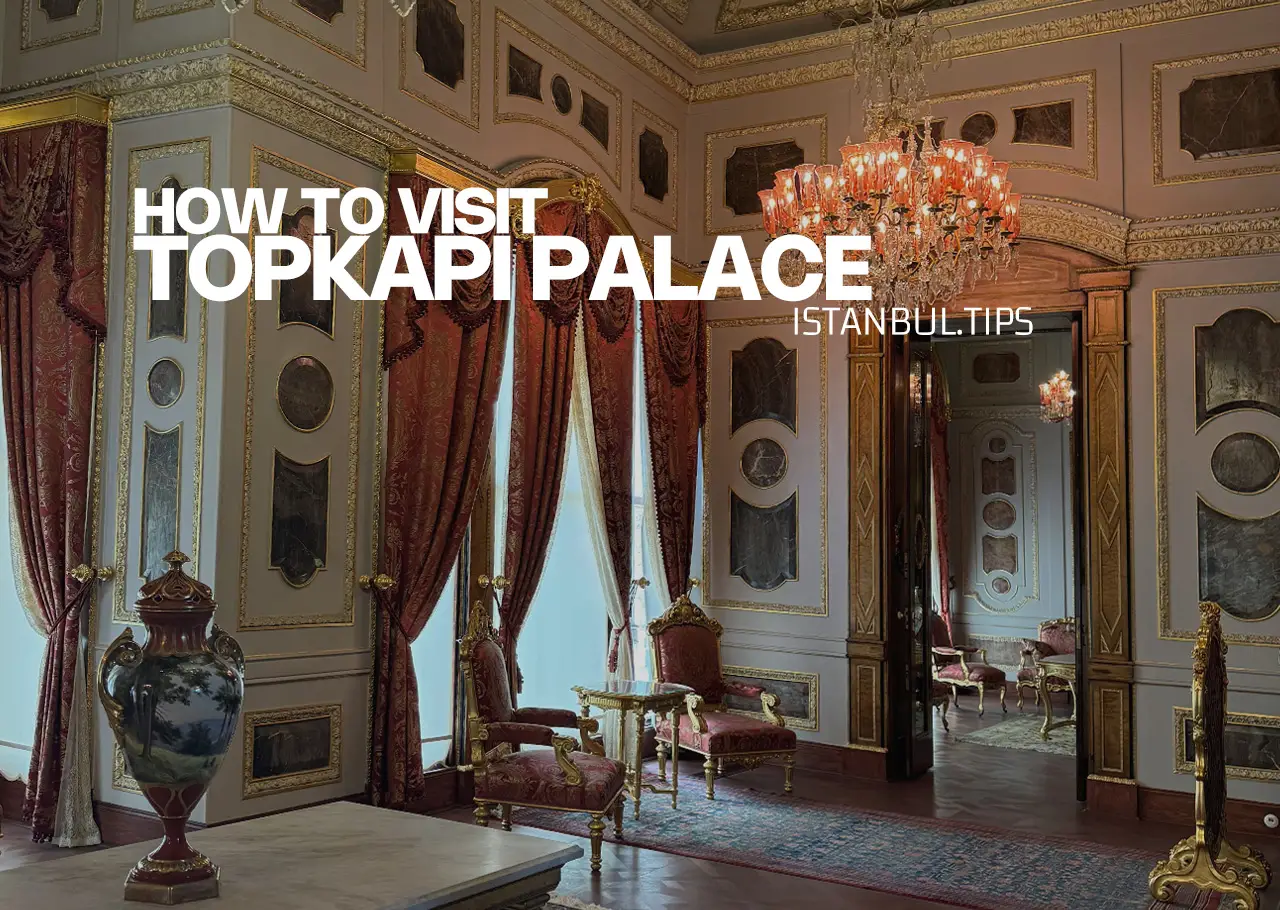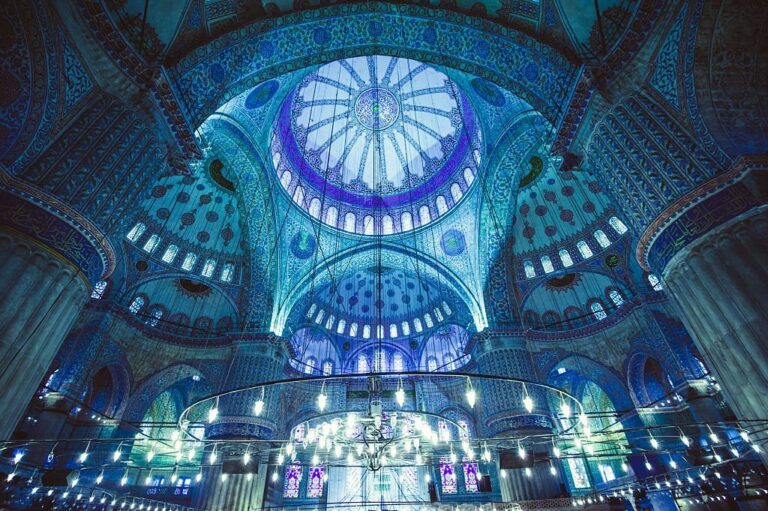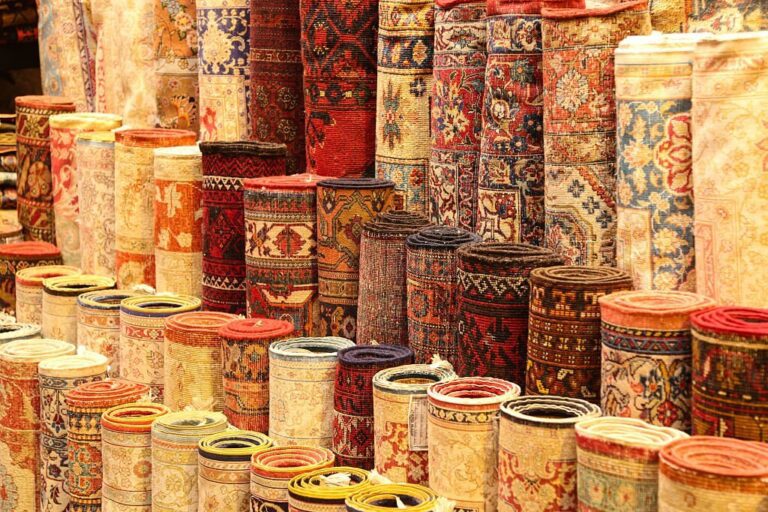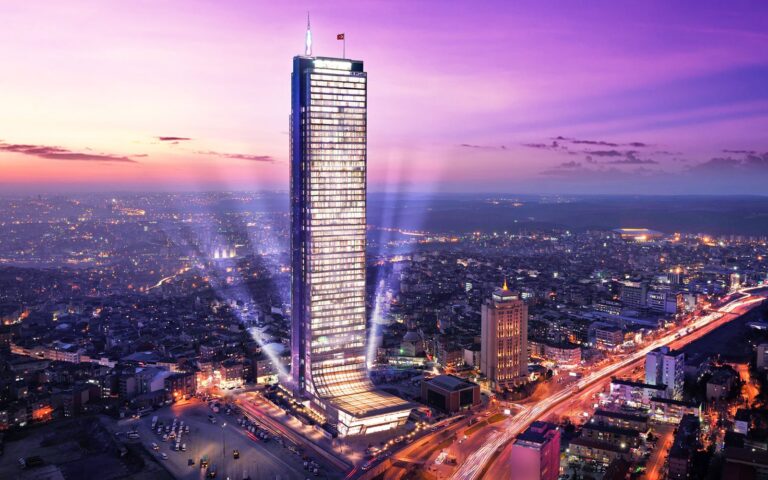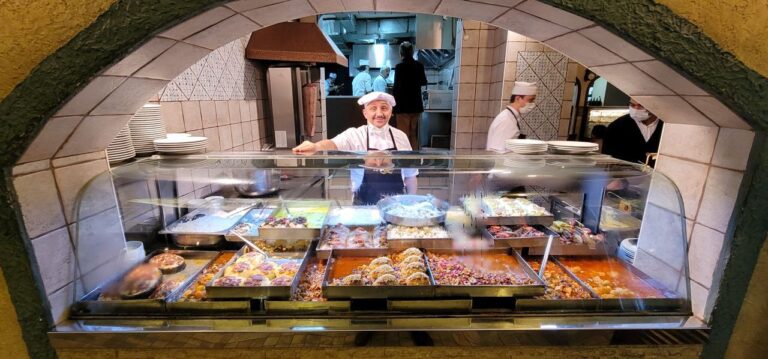Topkapi Palace Istanbul: Tickets, Hours & What to See 2025
Pay Once and Have Free Attractions Entry for 7 days
The Topkapi Palace in Istanbul, a stunning example of Ottoman architecture, is both a museum and a symbol of Istanbul’s imperial history. Built in the 15th century by Sultan Mehmed II, it served as the primary residence of Ottoman sultans until the 19th century and today houses an impressive collection of relics, treasures, and artifacts.
🕌 Discover Famous Landmarks of Istanbul
Istanbul: Topkapi Palace & Harem Museum Ticket & Audio Guide 🌟 4.2 / 5 (205 reviews)
Istanbul: Basilica Cistern Skip-the-Line Entry & Audio Guide 🌟 4.4 / 5 (318 reviews)
Istanbul: Blue Mosque & Hagia Sophia Small-Group Tour 🌟 4.4 / 5 (318 reviews)
Key Facts about Topkapi Palace
- Primary Residence: Topkapi was the sultans’ home from 1465 to 1856.
- Historical Role: The palace wasn’t just a residence; it was also the Ottoman Empire’s main administrative center, where leaders governed and held council.
- Architecture and Scale: Covering around 700,000 square meters, Topkapi’s architecture is a lavish example of Ottoman style, with intricate designs, courtyards, and luxurious interiors.
- These Days: In 1924, after the Ottoman Empire’s end, Topkapi became one of the first museums of the Republic of Turkey, showcasing Ottoman relics, art, and historical artefacts.
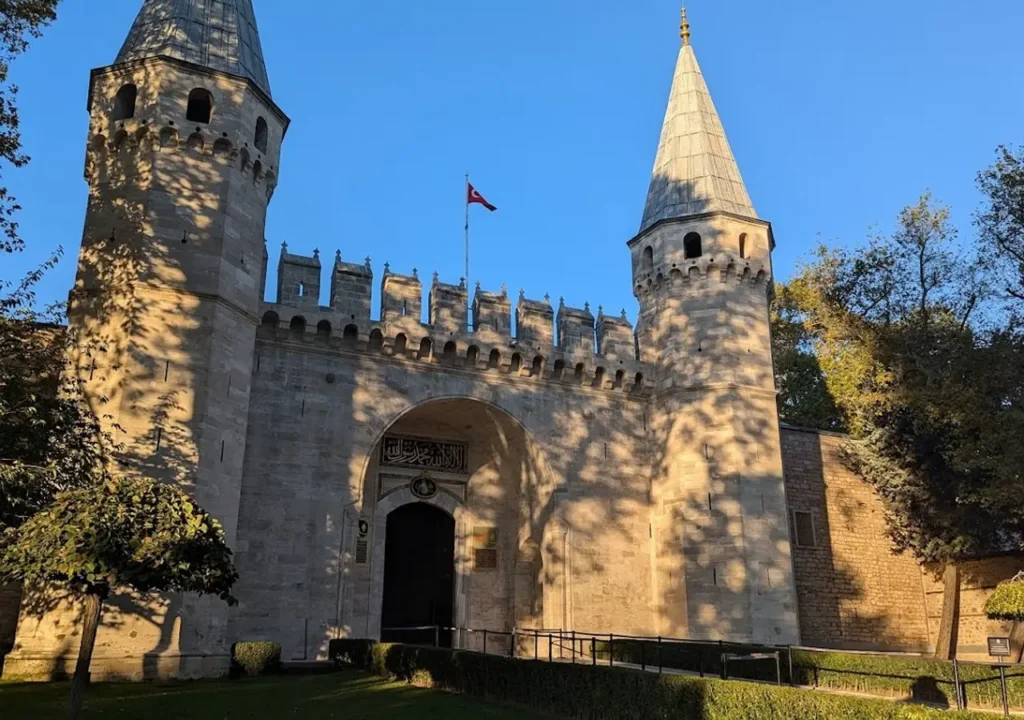
Where is Topkapi Palace Located?
Topkapi Palace is located in the Sultanahmet district of Istanbul, just a short distance from Hagia Sophia and the Blue Mosque. Check the map >>
Layout and Sections of Topkapi Palace
The palace complex is divided into four main courtyards, each with unique structures and purposes.
First Courtyard:
- Imperial Gate (Bab-ı Hümayun): This main entrance leads into the palace grounds. In Ottoman times, this area was open to the public and used for large gatherings.
- Hagia Irene: Here stands one of the oldest churches of the Byzantine Empire, later used as an imperial armory.
Second Courtyard:
- Gate of Salutation (Orta Kapı): Accessing this gate led to the heart of the palace. Only the sultan could pass on horseback.
- Council Hall (Kubbealtı): This domed chamber housed meetings of the Imperial Council, where ministers advised the sultan on state affairs.
- Tower of Justice: A tall landmark visible from afar, symbolizing the sultan’s authority.
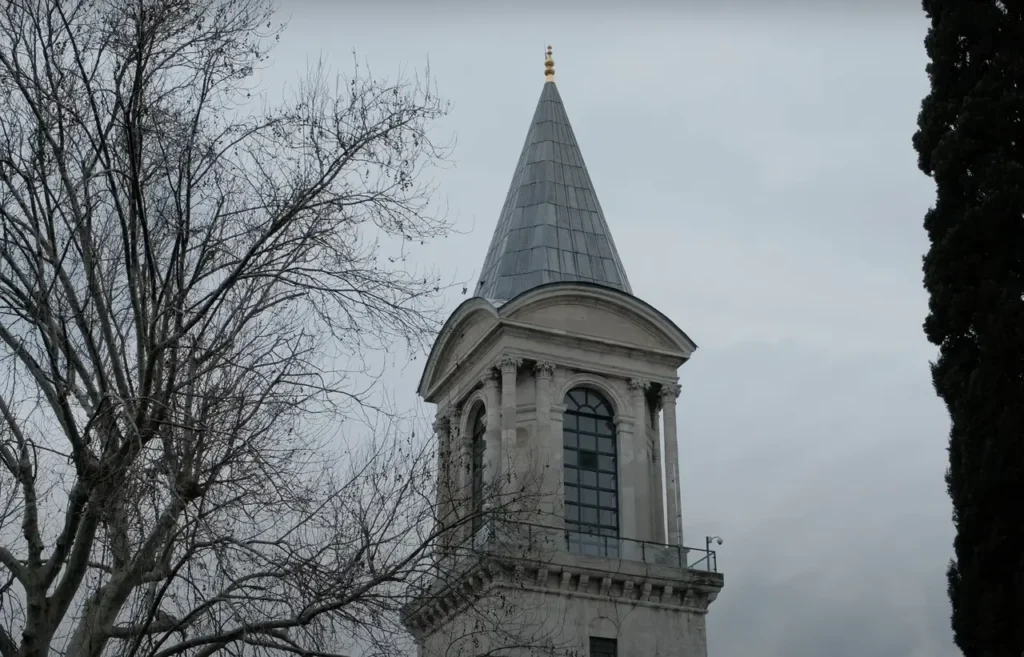
Third Courtyard:
- Gate of Felicity (Babüssaade): The entrance to the inner sanctum of the palace.
- The Harem: A secluded area that housed the sultan’s family, concubines, and their servants, with more than 400 rooms.
- Sacred Relics Chamber: Contains relics sacred to Islam, including items associated with the Prophet Muhammad.
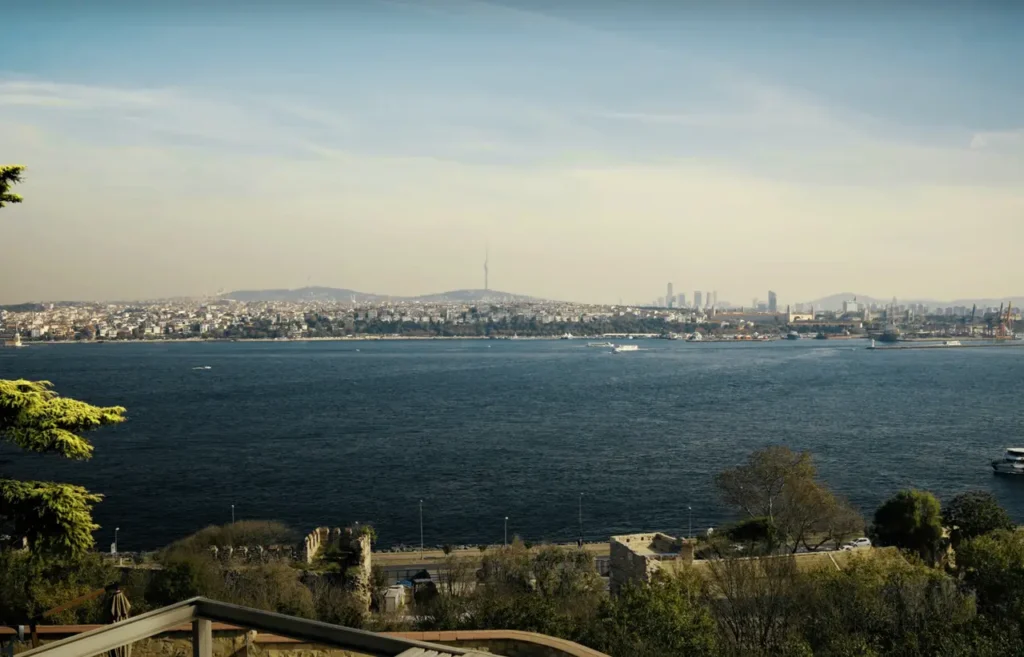
Fourth Courtyard:
- Private Gardens and Pavilions: A collection of beautiful gardens, terraces, and pavilions for the sultan and his family, with views over the Bosphorus and Marmara Sea.
- Circumcision Room: Used for the circumcision ceremonies of young princes.
Don’t Miss The Best Tours and Cruises in Istanbul
“Mehter” Military Band Performance at Topkapi Palace
Every Wednesday at 11:00 AM in the Second Courtyard of Topkapi Palace, you can experience a performance by the Mehter — the oldest military band in the world.
Topkapi Palace Tickets in 2025: Entry Fees
Here are the current ticket prices for Topkapi Palace from January 1, 2025:
- Topkapi Palace (with Harem included): 2000 TL for international visitors / 350 TL for Turkish citizens
- Harem Section (separate ticket): 750 TL for international visitors / 200 TL for Turkish citizens
- Hagia Irene (separate ticket): 750 TL for international visitors / 150 TL for Turkish citizens
Free Admission & Guided Tour of Topkapi Palace
The Istanbul E-Pass offers a way to save money and explore the city. It also includes a free guided tour of Topkapi Palace!
In addition to the Topkapi Palace tour, the Istanbul E-Pass grants you access to over 50 other attractions across the city!
Working Hours Topkapi Palace
Topkapi Palace is open from Wednesday to Monday, and closed on Tuesdays.
- Opening Hours: 9:00 AM – 6:00 PM (closed on Tuesdays)
- Box Office Closing: 5:30 PM (in both summer and winter)
While the palace closes at 6:00 PM, ticket sales end at 5:30 PM.
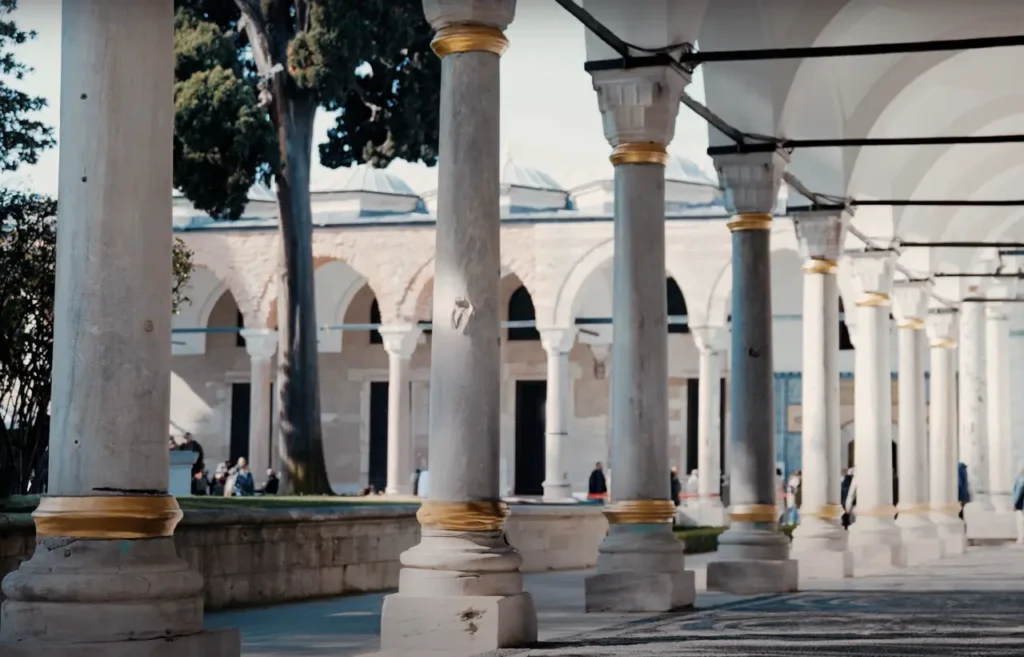
Topkapi Palace Night Tours
The palace museum is open for night tours every Saturday from 9:00 PM to 11:00 PM local time.
Tours operate in small groups, with the first group starting at 9:00 PM. Each group can accommodate up to 300 visitors.
Tours start and finish at the Bab-i Humayun Gate, the main entrance. Visitors can explore the Divan-i Humayun (Imperial Council), the Kubbealti Building, and the Palace Clock Gallery. In the Harem section, guests can see various rooms, including the newly opened “Kushkhane” kitchen in the concubine quarters, as well as other select areas of the palace.
- Tickets for the night tours are available at the box office in front of the palace.
- Prices: 1000 lira for Turkish citizens and 5000 lira for international visitors.
- For more information and reservations, please call +90 (212) 236 9000.
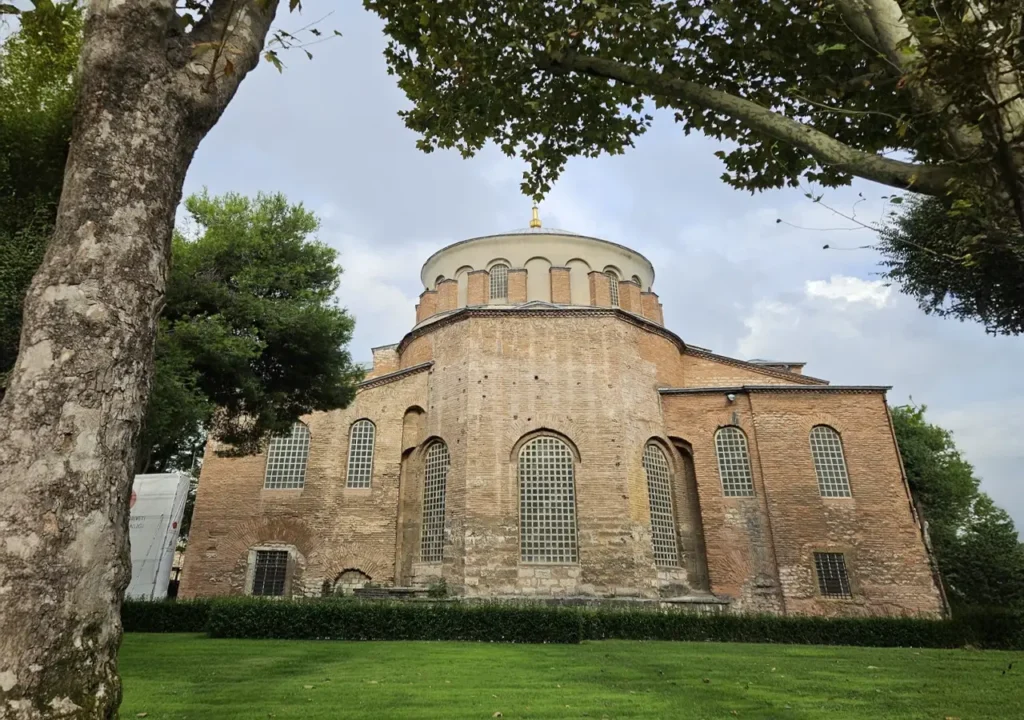
Topkapi Palace: A Guide to Each Court
The First Courtyard
The Court of the Janissaries, also known as the First Court or Parade Court, was the entrance courtyard of Topkapi Palace, primarily used by the Janissaries, the elite Ottoman infantry unit who served as the sultan’s personal guard.
- Fountain of Sultan Ahmet III: Just outside the Imperial Gate, you’ll see a large, decorated fountain built by Sultan Ahmet III in 1728. It’s a grand example of Ottoman rococo style.
- Entrance through the Imperial Gate: Passing through this gate brings you to the First Court, also known as the Court of the Janissaries. This area served as a parade ground for soldiers and hosted military events.
- Tiled Kiosk: The garden in this courtyard is filled with flowers, fountains, and a kiosk where the sultan entertained guests.
- Hagia Irene: This large Byzantine church was turned into an arsenal by the Ottomans. One of the few churches not converted into a mosque, Hagia Irene has a unique place in the palace grounds as a historical monument.
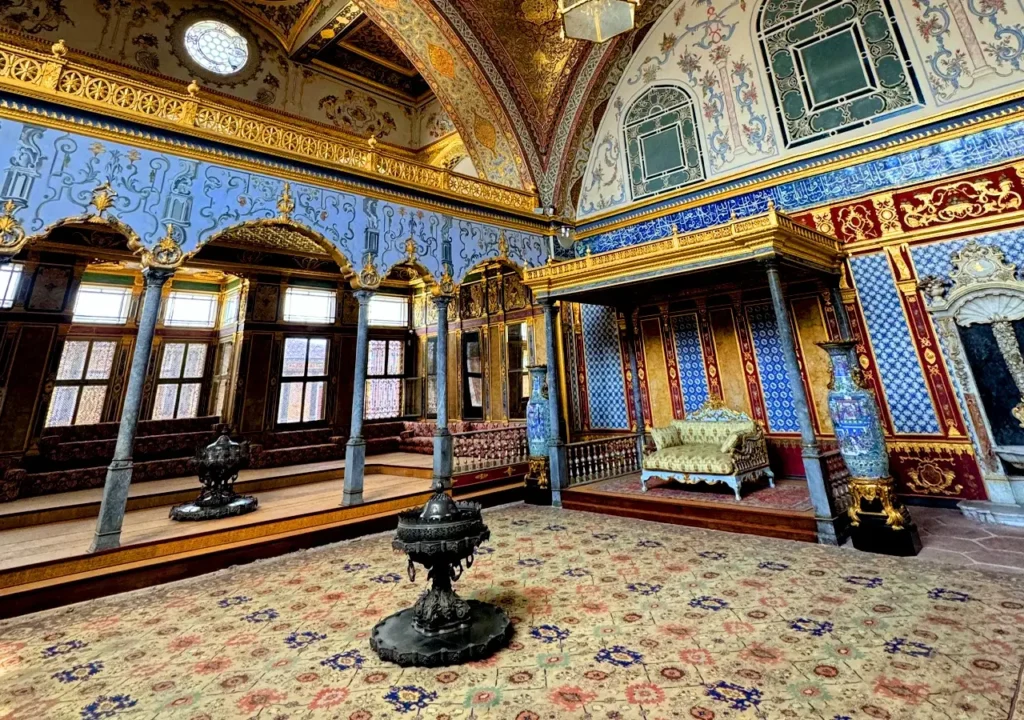
The Second Courtyard
The Second Court, also known as the Court of the Divan, was where the empire’s administrative work took place. Officials and advisors met here in the Council Hall, and it was the first area the sultan’s family and close officials could access.
- Middle Gate Protocols: Only the sultan and his mother were allowed to ride through the Middle Gate, while everyone else had to dismount. This court was where officials and envoys conducted official business.
- Palace Kitchens: On the right side, the massive kitchens showcase collections of Chinese celadon porcelain, known for its beauty and supposedly poison-detecting qualities. The kitchens also feature Ottoman cookware and artifacts.
- The Divan (Council Hall): Here, the grand vizier met with high-ranking officials to discuss state affairs. This room was an important part of the empire’s daily governance.
- Tower of Justice: Overlooking the Second Court, the Tower of Justice symbolized the sultan’s role as the supreme judge of the empire.
- Entrance to the Harem: The Harem, located beneath the Tower of Justice, was the private area of the palace where the sultan’s family lived. This section required a separate ticket and offers insight into the lives of the imperial family.
- Imperial Carriages: These intricately crafted carriages, used by the sultans and their families, are displayed in the Second Court. They reflect the wealth and craftsmanship of the time, giving insight into the opulent lifestyle of Ottoman royalty.
- Weapons Room: This room houses an impressive collection of Ottoman weapons, including swords, shields, armor, guns, and cannons. The exhibit showcases the military power of the empire and the advanced craftsmanship of Ottoman weaponry.
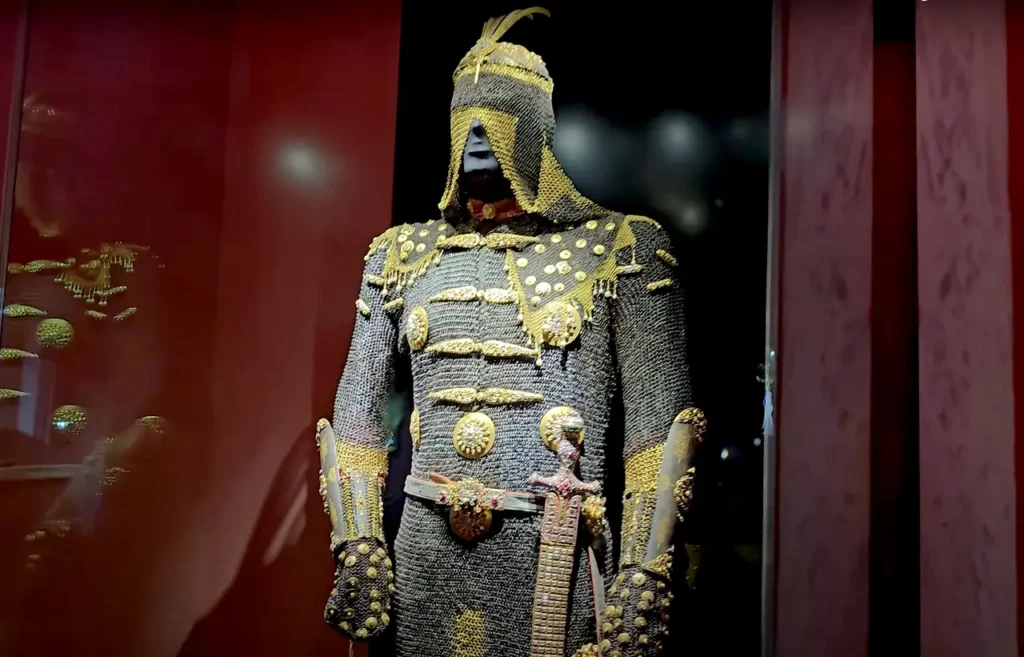
Third Court: The Inner Palace
The Third Court, accessible through the Gate of Felicity, was the sultan’s private area and one of the most exclusive parts of Topkapi Palace. Guarded by white eunuchs, this area housed the sultan’s audience chamber, sacred relics, and imperial treasures.
- Audience Chamber: Built in the 16th century and later refurbished, this chamber was where the sultan met with high-ranking officials and foreign ambassadors. The sultan sat on a large divan, inspecting gifts and offerings through a side door.
- Library of Ahmed III: This light-filled library, completed in 1719, features beautiful inlaid woodwork and cozy reading spaces, reflecting the Ottoman commitment to scholarship.
- Dormitory of the Expeditionary Force: This dormitory displays imperial robes, including kaftans decorated with silver and gold. Also noteworthy are the talismanic shirts, which were believed to protect the wearer from harm.
- Sacred Safekeeping Rooms: These rooms, decorated with İznik tiles, hold religious relics, including items associated with the Prophet Muhammad. In Ottoman times, the imperial family would visit these rooms once a year during Ramadan.
- Dormitory of the Privy Chamber: This dormitory showcases portraits of 36 sultans, each offering a window into the empire’s history. Notable among them is a painting of Sultan Selim III’s enthronement by Konstantin Kapidagli.
- Imperial Treasury: This treasury holds a dazzling array of precious items, including the jewel-encrusted Sword of Süleyman the Magnificent, the Topkapi Dagger, and other treasures from around the world. The rooms also contain exquisite non-Ottoman artifacts, including Indian pearl figures and a decorative jug from Iran.
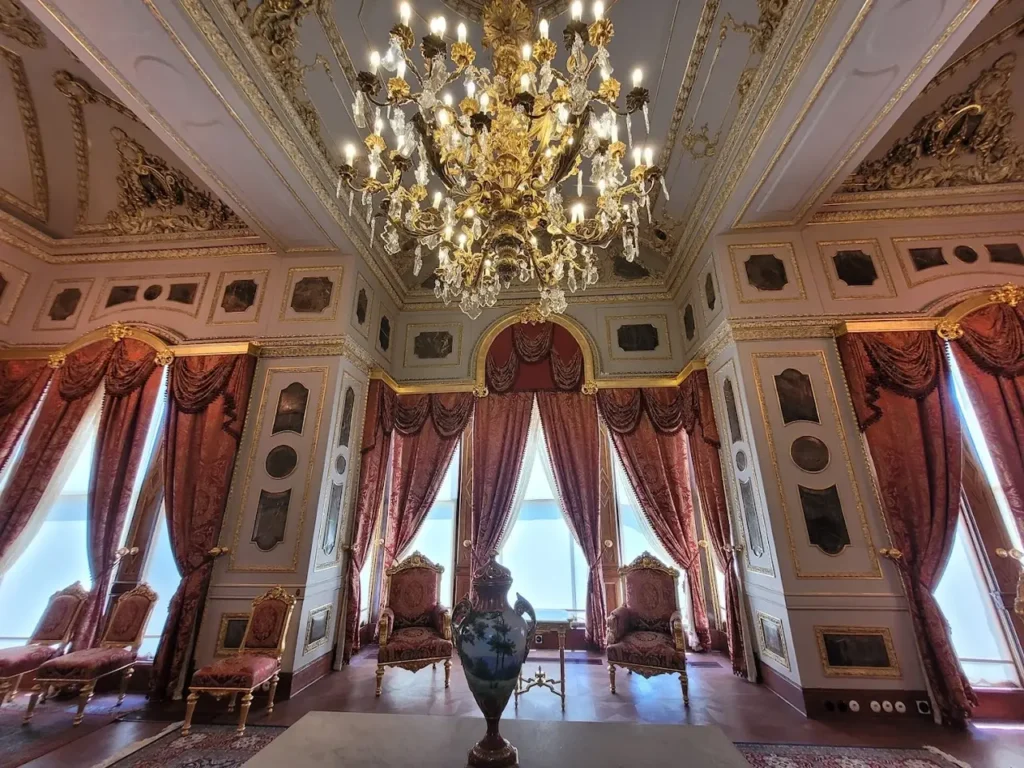
Fourth Court: Gardens and Pavilions
The Fourth Court, also called the Tulip Garden, is filled with pleasure pavilions, gardens, and terraces that offered the sultan a private escape and views over Istanbul. Built during various reigns, each structure reflects Ottoman art and architecture, with elements influenced by European styles.
- Mecidiye Kiosk: Built by Sultan Abdül Mecit in the mid-19th century, this kiosk showcases European architectural influences popular at the time. Below the kiosk is the Konyalı restaurant, which offers panoramic views but is known for steep prices.
- Head Physician’s Pavilion: Located on the Mecidiye Kiosk’s terrace, this pavilion served the palace’s chief doctor, a role historically held by a Jewish physician. Nearby is the Kiosk of Kara Mustafa Pasha, dating back to the late 17th century, featuring elaborate gilded ceilings, painted walls, and stained glass.
- Marble Terrace and İftariye Kameriyesi: At the far end of the Tulip Garden is the Marble Terrace, where a decorative pool and three smaller pavilions can be found. İftariye Kameriyesi is a charming little structure built by Sultan İbrahim I in 1640 as a scenic place for breaking the fast during Ramadan.
- Revan Kiosk: Built by Sultan Murat IV in 1636 to commemorate his victory in Yerevan, the Revan Kiosk was also known as the Chamber of Turbans because it housed the sultan’s turbans.
- Baghdad Kiosk: Constructed in 1639, this pavilion was Murat IV’s tribute to his capture of Baghdad. It’s known for its exquisite İznik tiles, a beautifully painted ceiling, and inlay work in mother-of-pearl and tortoiseshell, making it one of the finest examples of Ottoman classical architecture.
- Circumcision Room: Also built by Sultan İbrahim I, this small, tile-covered room was used for the circumcision ceremonies of Ottoman princes, a significant tradition in palace life.
- Sofa (Terrace) Mosque: Also known as the Terrace Mosque, this small mosque was constructed for the sultan and his family to pray without leaving the private court.
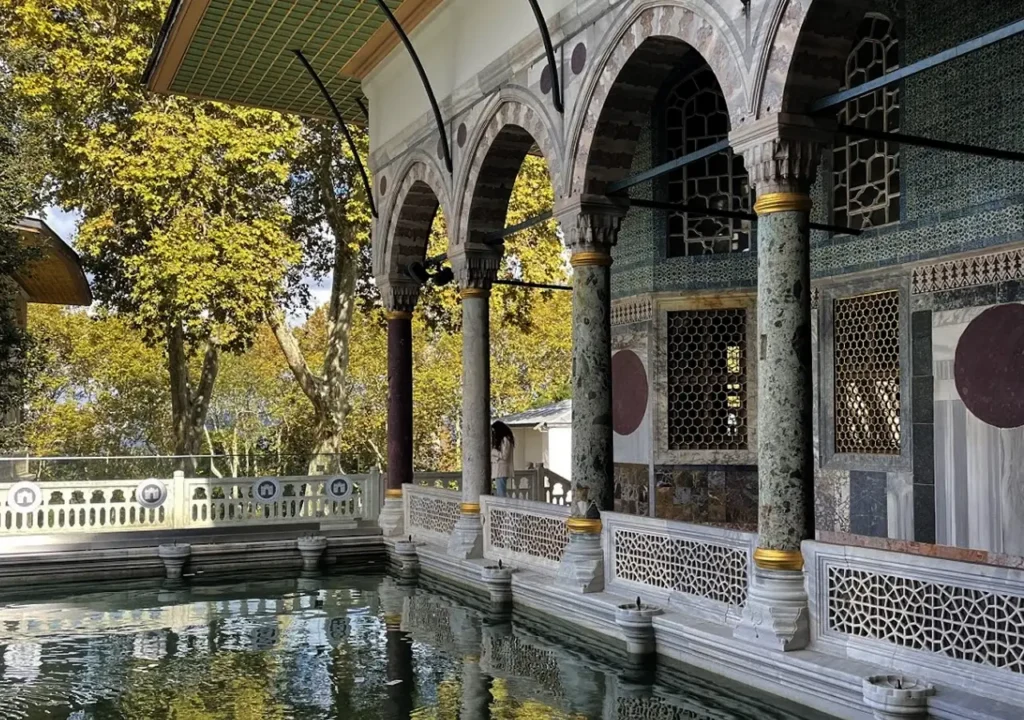
Topkapi Palace: Practical Visiting Tips
- Wear Comfortable Shoes: There’s extensive walking on cobblestones, stairs, and around large courtyards.
- Arrive Early: Topkapi Palace gets crowded, especially in peak season. Arrive early or in the late afternoon. Note that the palace closes at 6 PM, so a morning visit gives you the most time, especially if you want to see the Harem.
- Bring Water and Check the Weather: Much of Topkapi is open-air, so bring water and be prepared for weather.
- Avoid Long Queues at the Imperial Gate: Security checks at the main Imperial Gate can have long lines. As an alternative, enter through the Archaeology Museum entrance by taking the steep path through Gülhane Park to reach the first courtyard.
How to Get to Topkapi Palace?
Located in Istanbul’s historic peninsula, Topkapi Palace is easily accessible by public transportation. Here are some convenient options:
- By Tram: Take the T1 tram line and get off at the Sultanahmet stop. From there, it’s a short walk to the palace.
- By Marmaray: Take the Marmaray and get off at Sirkeci station. The palace is about a 10-minute walk from there.
Don’t Miss The Best Tours and Cruises in Istanbul
Old City Digital Route №1
A step-by-step guide to uncovering Istanbul’s hidden gems beyond Sultanahmet. Access the route via Google Maps and a handy PDF guide, both packed with:
- Local dining spots for any budget
- Currency exchange tips
- Recommended hotels in Fatih
- Directions from the airport to Sultanahmet
- Souvenir and gift ideas
$9.99
